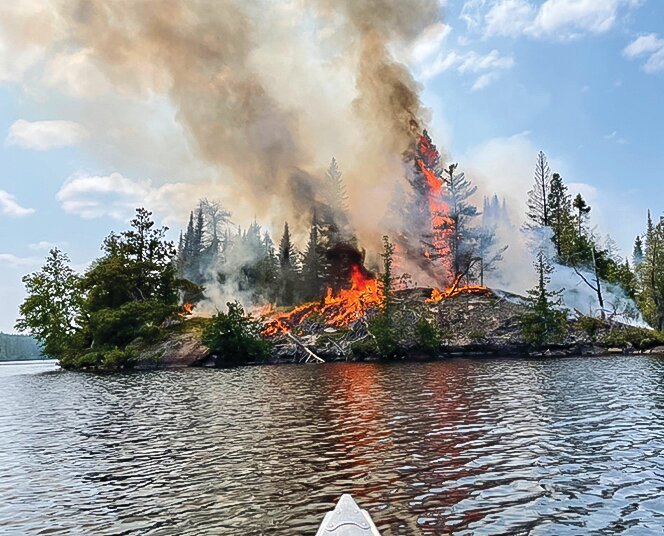Support the Timberjay by making a donation.
Exceptionally dry June raises fears of 2021 repeat
Forest Service lifts most of Spice Lake closure as fire contained
THE BOUNDARY WATERS— Here we go again? That’s the concern from outfitters and lovers of the Boundary Waters in general as one of the driest Junes on record is fueling wildfires and …
This item is available in full to subscribers.
Attention subscribers
To continue reading, you will need to either log in to your subscriber account, or purchase a new subscription.
If you are a current print subscriber, you can set up a free website account and connect your subscription to it by clicking here.
If you are a digital subscriber with an active, online-only subscription then you already have an account here. Just reset your password if you've not yet logged in to your account on this new site.
Otherwise, click here to view your options for subscribing.
Please log in to continue |
Exceptionally dry June raises fears of 2021 repeat
Forest Service lifts most of Spice Lake closure as fire contained
THE BOUNDARY WATERS— Here we go again? That’s the concern from outfitters and lovers of the Boundary Waters in general as one of the driest Junes on record is fueling wildfires and prompting closures in the 1.1-million-acre wilderness area to protect public safety. It all brings back memories from the summer of 2021, when all or portions of the Boundary Waters were closed for weeks.
For now, the closure, centered around Spice Lake, won’t impact many wilderness users entering the wilderness from Ely area entry points, but the situation is raising alarm bells for businesses that rely on trips to the Boundary Waters. “I’m worried,” said Steve Piragis, who operates a wilderness store and outfitting company in Ely. “This is not good. June has traditionally been a rainy month and a cold month,” he said.
Instead, June this year is running several degrees warmer than normal, and much, much drier than average. While June typically brings a bit over four inches of rain for the month, most reporting stations in the area have reported less than half an inch through the first three weeks of the month. Some, like Ely, have reported less than a tenth of an inch, although the forecast for the weekend holds out hope for some potentially significant rainfall and a return to a more seasonable pattern after that.
The region began the summer with plentiful moisture after a snowy winter lingered into late April, but May proved drier than average and June has been exceptionally dry. According to the U.S. Drought Monitor, virtually all of the region is now rated as abnormally dry or in moderate drought.
While the current conditions are reminiscent of the summer of 2021, the fire danger is ramping up even earlier than at that time.
Spice Lake closure
The Spice Lake fire was first reported on June 13 and was initially estimated at about 30 acres. Two days later, despite relatively little fire activity, the Forest Service issued a closure affecting a large portion of the north-central BWCAW. The closure includes the eastern two-thirds of Knife Lake and east along the border to Saganaga and south to Makwa, Boulder and Fraser lakes. Most of that closure was lifted as of Wednesday as crews completed containment of the blaze.
The Forest Service defended its closure decision even as it acknowledged the impact it will have on area businesses and communities that serve wilderness visitors. “Due to the complexity of the Spice Lake fire, the closure is necessary,” stated the Forest Service in a Q&A posted online. “These are not normal circumstances, the drought, warm temperatures, unpredictable high winds and fuel loads are creating a dangerous condition for our firefighters and the recreating public.” The area is also highly remote and has limited communication capability, according to the Forest Service. “It takes an extended length of time to paddle the area, the capacity for extreme fire behavior and excessive fuel conditions all lend to a large fire growth potential. These factors combined require a large closure area until we have complete containment.”
Beyond the closures for the Spice Lake Fire, the Superior National Forest remains open to the public, although campfires are currently prohibited due to the dry conditions.
A case in point highlights the risk, said Joy VanDrie, a public information officer with the Superior. She said canoeists on Spider Lake recently encountered a small campfire that had been built and then abandoned outside of a fire grate. The fire burned into the underlying duff and was moving toward a thicket of dense balsam fir when the canoeists saw the smoke and proceeded to douse the fire. The canoeists then notified the Forest Service, which sent additional personnel to ensure the fire was fully extinguished.






